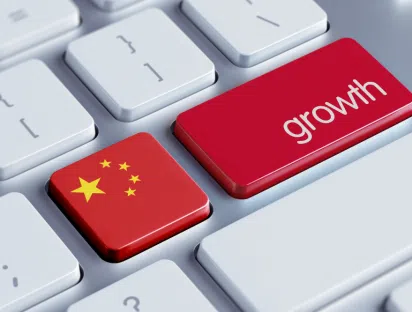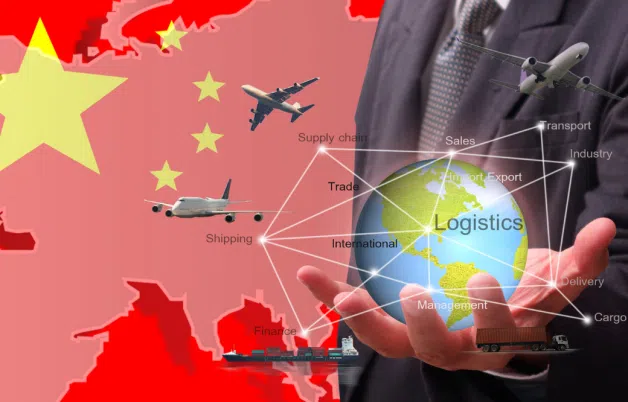
AT THE END OF OBAMA’S PRESIDENCY, HIS TRADE SECRETARY, MRS. PRITZKER, EXPRESSED CONCERN OVER THE FACT THAT CHINESE SUBSIDIZED, STATE-DRIVEN, AND LONG-TERM FOCUSED CATCHING-UP HAD DISCOURAGED AMERICAN CAPITALISM. THE IMF CONVERSELY RELEASED FIGURES STATING THE OPPOSITE: CHINESE COMPETITION ACTED AS A WAKE-UP CALL FOR FURTHER COMPETITION TO INNOVATE.
As for China, the year 2012 saw the end of its history of growth: the country’s double-digit, high-speed growth era reached an end, and the decline of China’s economic miracle began. In fact, China’s 40-year growth trajectory happened to conform to development from a factor-driven to an investment-driven economy: the country had experienced the factor-driven stage – the first stage of development in which competitive advantage is based on unskilled labor or natural resources - from the 1980s to 2006, started going through the investment-driven stage (from 2007 until the present). Now the government wants to achieve an innovation-driven stage as quickly as possible. What are the internal mechanisms of all these growth stages?
THE ‘ENGINES’ OF CHINA’S ECONOMIC GROWTH
To understand how China continues to grow, a good start is to understand that Chinese government officials treat economic growth like managers operating business companies. For the Chinese government, economic growth is concretely powered by a series of interrelated economic activities; a mixture of industries, sectors, clusters, regions, techno-economic complexes, or value chains, etc., which can last for a certain time to contribute to GDP. Local policy makers often term them simply as ‘growth engines’, ‘growth poles’, or ‘pillar/dominant industries’. The inner core of each ‘growth engine’ is a capital accumulation regime, with its financial mechanisms and institutions providing firms and local government with enough incentive to repeat capital circulation and investment flows around the specific economic activities so that the ‘engine’ can be reproduced. The Chinese government’s mission of growth is to find, design, cultivate, construct, craft, and support such ‘engines’, because officials know that it is impossible to continue long-term growth without any major upheaval of the inner capital accumulation regime. Over time, China’s economic growth has been powered by four ‘engines’ piling up on each other.
The ‘engine’ of export-manufacturing
Over the period from the 1980s to 2006, with a policy of reforming the former planned economic system and opening it to the outside world, firms in manufacturing sectors took use of China’s surplus labor from rural areas, land, and access to loans, and built up a low-cost advantage for export manufacturing. Exporting to international markets and foreign direct investment in China brought in large amounts of foreign exchange. In 2001, China joined the WTO and business confidence was high. Returns on capital improved and a lot of ‘hot money’ flooded into the country. Fiscal decentralization, land revenues, and increased domestic credit encouraged local governments to invest in infrastructure development, which in turn attracted more private and foreign direct investment for export manufacturing. The Chinese low-cost, common knowledge based, and mass-production industrialization process reached its climax in 2008, the year the Olympic Games was held in Beijing.
The ‘engine’ of infrastructure-urbanization
However, the financial crisis in 2008 had a considerable impact on Chinese manufacturing industries in terms of export demand. Facing the challenge of the GDP growth rate slowing down, the Chinese central government turned to more proactive fiscal and monetary policies. Its anti-crisis package in 2009 included a government budget expenditure of 4 trillion Yuan backed up by bank credit support of 10 trillion Yuan. Both central and local governments invested massively in the infrastructure network of motorways, service stations, airports and oil distribution systems, enabling enormous demand for automobiles, consumer durables, synthetic materials, and petroleum products. After 2003, Chinese economic growth counted more heavily on investment, which increased from around 35% to around 40% of GDP.
The ‘engine’ of property-based financial asset investment
As Chinese growth was driven by investment after 2007, its investment was mainly financed by credit expansion. Local officials also took advantage of the stimulus package and the huge expansion of bank lending to initiate their local projects as rapidly as possible. Many local firms were created only to act as financing platforms to enjoy greater access to bank loans. Excess money supply flooded into the Chinese property market and capital market, creating asset bubbles. In 2016, the value of Chinese properties was 250% of its GDP. China’s capital market value reached 70 trillion Yuan in the same year. Total debt in China was 150.03 trillion Yuan, including 20 trillion in local government debt. China’s ratio of total debt to GDP had risen from 170% in 2008 to 235.7% in 2014. This injection of huge liquidity quickly financed the whole Chinese economy with the rapid growing dominance of financial institutions and markets over industrial firms and employees. The short-term counter-crisis macroeconomic measures and the consequent series of policies from the Chinese central government crafted a new circle of capital accumulation, where a substantial part of profits was made through financial channels and speculation, rather than through trade and commodity production. Thus, the center of the Chinese economy was deviated from export-manufacturing industries to monetary and finance-related sectors, including real estate properties and shadow banking. But this new engine was soon in trouble. The financialization of the Chinese economy created speculation in derivatives, asset bubbles, and even less legitimate schemes. It built extraordinary paper mountains of wealth and increased leverage through shadow banking, local debt, and non-performing bank loans.
The ‘engine’ of the digital platform economy
After 2012, China began to have more and more companies in E-commerce, 5G technology, and internet-based payment system. Its service economy now accounts for more than 50% of GDP. China now has a leading global position in various digital economic sectors, such as E-commerce and omnichannel marketing, social network commerce, with an on-demand economy, shared mobility, distribution and logistics, FinTech, EdTech, HealthTech, and smart cities. The Chinese digital tech companies such as Baidu, Alibaba, Tencent, Huawei, and Xiaomi, have created one of the best digital ecosystems in the world and constitute highly dynamic sectors that boost China’s growth. Covid-19 amplified the infusion of digital sectors into the whole Chinese economy. Now, China’s digital platform economy is heavily weighted on the consumption side instead of the manufacturing side. Financial bubbles have also been produced due to a massive rise of venture capital, private equity funds, international investment, and public money support. The operation of the fourth engine is based on the full operation of first engine, i.e., the export-manufacturing sectors.
Nowadays, China’s policymakers are looking for a new ‘engine’. According to the Chinese government, it will be an upgraded and advanced version of the export-manufacturing engine, but targeting high-tech manufacturing sectors such as automotive, aviation, machinery, robotics, high-tech maritime and railway equipment, energy-saving vehicles, medical devices, and information technology. Only time will tell if this new ‘engine’ can continue to power China’s growth.
References
Wei Zhao & Joël Ruet (2021) Managing the “Post Miracle” Economy in China: Crisis of Growth Model and Policy Responses, Post-Communist Economies, 33:7, 820-841, DOI: 10.1080/14631377.2020.1867427




